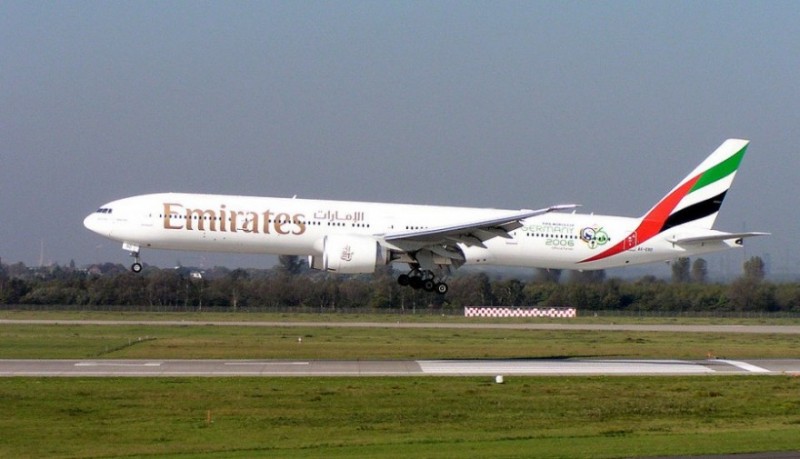Emirates (EK) today announced the starting of daily flights between Dubai (DXB) and Washington’s Dulles International Airport (IAD). The new service to be operated using Boeing 777-300 ER will start on September 12, 2012, just in time for the busy travel season. The flight will feature eight private suites in First Class, 42 lie-flat beds in Business Class and 304 seats in Coach class, according to the press release from Emirates.
It is interesting to note that just in February, Etihad (EY) announced the starting of service between Abu Dhabi (AUH) and Washington Dulles from March 13, 2013.
Greater Washington DC area is the second largest market for travel from the United States to Middle Eastern countries, just behind New York. So, it is not a surprise to see the three major Gulf Carriers (Emirates, Qatar Airways and Etihad) try to get a piece of the market share. Qatar has been flying this route for more than five years.
The announcement of flights to Washington from Emirates was expected for a while. United (UA) already flies the Washington-Dubai route. This would make Washington Dulles the only North American airport to have flights to Dubai operated by two airlines. It would be interesting to see how United would respond to this announcement. I think, there is enough market share for both players to maintain their services. Each would play to its respective strengths. Emirates, known for its legendary service and huge hub in Dubai, can connect passengers from Asia,Indian Subcontinent, Middle East and Africa to Washington. Emirates will focus on passengers ending travel in Washington as it has minimal onward connections from Dulles (through JetBlue, Virgin America and American). United, with its hub in Washington Dulles, can connect passengers from throughout North America to Dubai. So, United will have better onward connections from Washington to throughout North America.
Passengers traveling to Indian subcontinent will have more options now, as Emirates connects to 17 destinations from its Dubai hub, with multiple daily flights to big markets like Mumbai (BOM), Delhi (DEL), Chennai (MAA), Kolkatta (CCU), Bengaluru (BLR) and Hyderabad (HYD).
